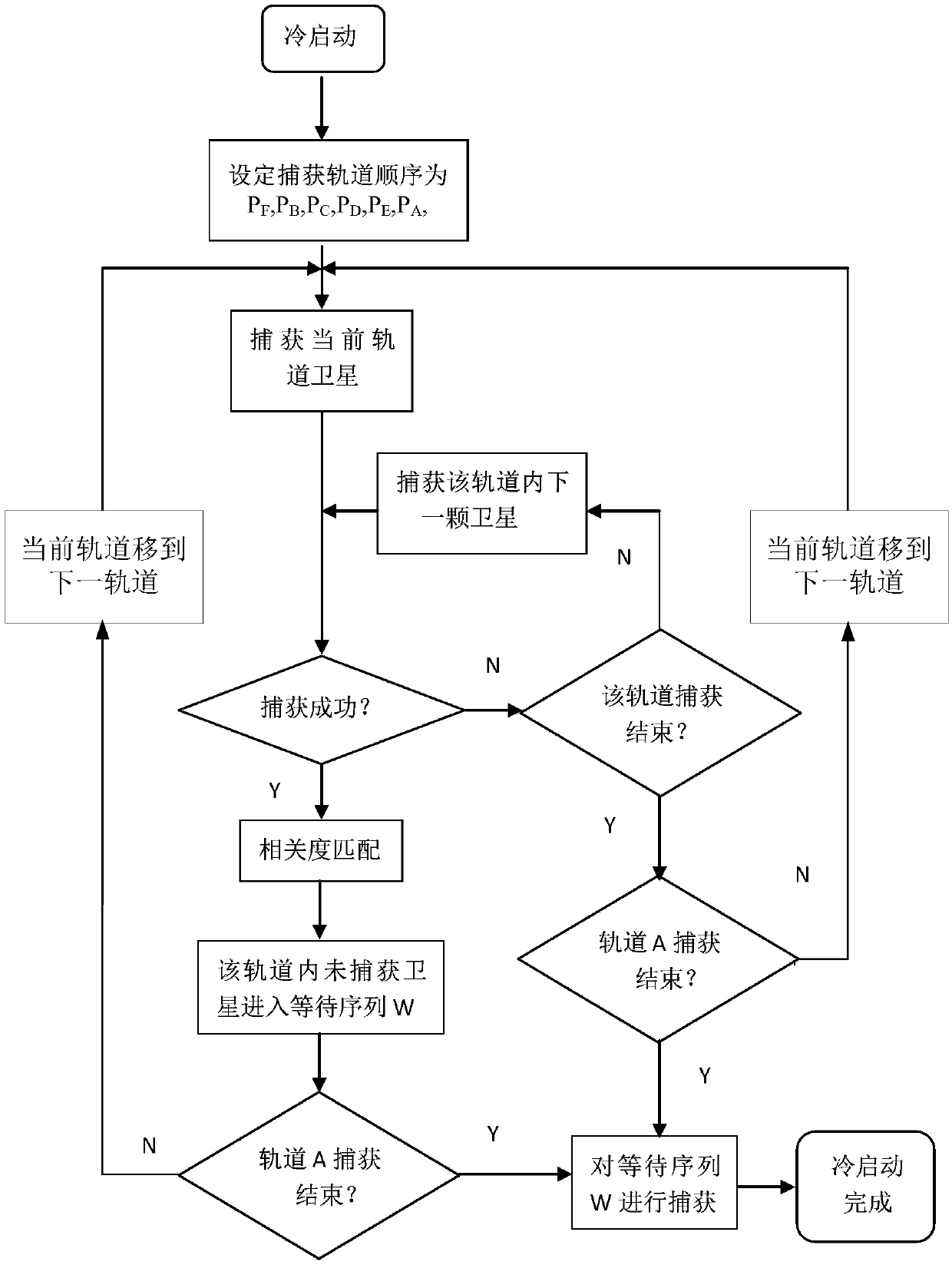Fast Cold Start Method of Satellite Receiver
A satellite receiver and cold-start technology, applied in the field of satellite receivers, can solve the problems of slow cold-start process, affect receiver timeliness, affect positioning efficiency, etc., achieve fast positioning, shorten cold-start time consumption, and improve positioning accuracy Effect
- Summary
- Abstract
- Description
- Claims
- Application Information
AI Technical Summary
Problems solved by technology
Method used
Image
Examples
Embodiment 1
[0035] This embodiment is a cold start of the GPS satellite receiver, and the satellite data used is obtained by collecting and counting all-weather GPS satellite data in many places in China and Russia. Such as figure 1 As shown, the fast cold start of the GPS satellite receiver includes the following steps:
[0036] Step 1, grouping the satellites in the satellite system according to their orbits;
[0037] There are 32 GPS satellites in total, distributed in six orbits, so the 32 satellites are divided into six groups A, B, C, D, E, and F according to their orbits; the kth group, that is, the number of satellites in the kth orbit is N k , k∈{A,B,C,D,E,F};
[0038] Step 2, sort the satellite groupings according to the statistical results visible to satellites in each orbit to obtain the orbit priority;
[0039] According to the satellite data adopted in this embodiment, it can be calculated by formula (2), the mathematical expectation E(X) of a single orbit k | k The ord...
Embodiment 2
[0067] This embodiment takes the Beidou navigation satellite receiver independently developed by China as an example.
[0068] As of June 2016, the Beidou system had 21 satellites in orbit, 14 of which were launched before the end of 2012, and the remaining 7 were launched after February 2015. Therefore, most of the current Beidou receivers are designed in Based on 14 satellites launched in 2012, satellites launched after that are not within the capture range. The Beidou receiver used in this embodiment is also based on the constellation structure of 14 satellites in 2012.
[0069] Step 1, grouping the satellites in the satellite system according to their orbits;
[0070] Among the in-orbit working satellites launched before the end of 2012, there are 5 GEO satellites, whose PRN codes are 01-05; 5 IGSO satellites, whose PRN codes are 06-10; 4 MEO satellites, whose PRN codes are 11-14. The satellites are thus divided into 3 groups: GEO, IGSO and MEO.
[0071] Step 2. Sorting...
PUM
 Login to View More
Login to View More Abstract
Description
Claims
Application Information
 Login to View More
Login to View More - R&D
- Intellectual Property
- Life Sciences
- Materials
- Tech Scout
- Unparalleled Data Quality
- Higher Quality Content
- 60% Fewer Hallucinations
Browse by: Latest US Patents, China's latest patents, Technical Efficacy Thesaurus, Application Domain, Technology Topic, Popular Technical Reports.
© 2025 PatSnap. All rights reserved.Legal|Privacy policy|Modern Slavery Act Transparency Statement|Sitemap|About US| Contact US: help@patsnap.com



